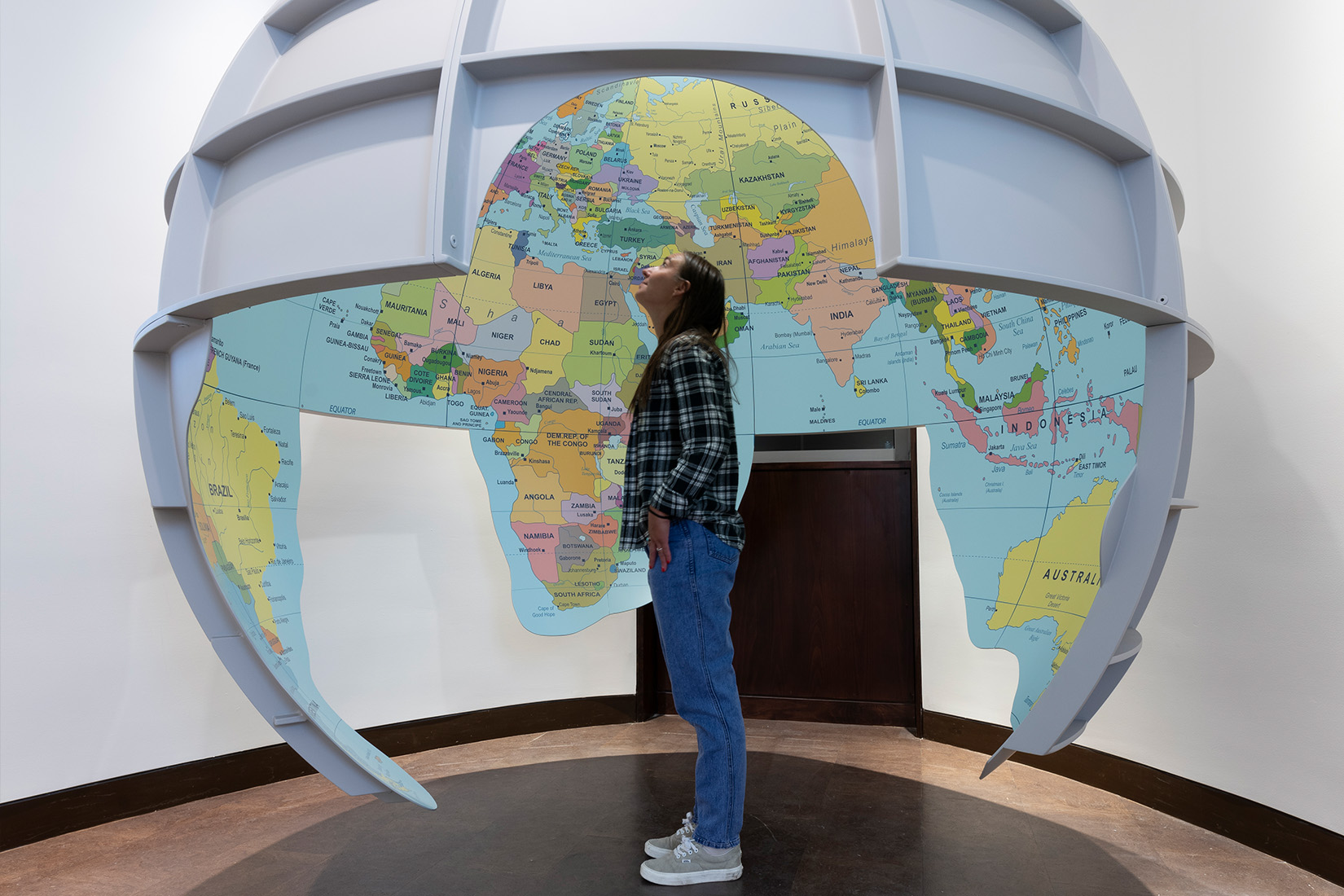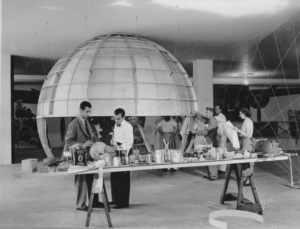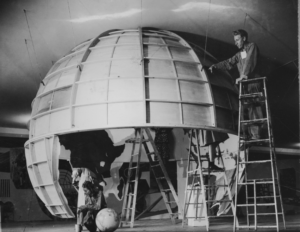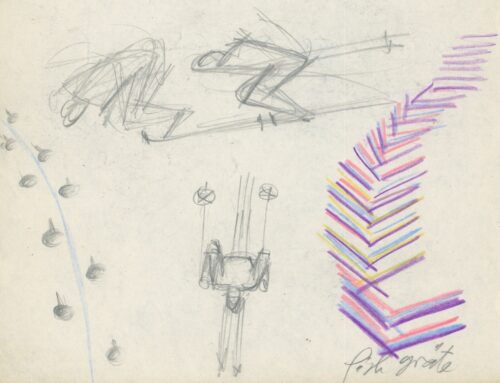
Replica of Herbert Bayer’s Outside-In Globe in Resnick Gallery
To mark the 70th anniversary of the publication of Herbert Bayer’s World Geo-Graphic Atlas, the Aspen Institute has mounted two exhibitions—Charting Space and Concept of a Visualist— celebrating this major publication.
A highlight of Charting Space, located in the Resnick Gallery on the lower level of Doerr-Hosier Center, is a re-creation of Bayer’s “Outside-In Globe” originally erected in 1943 for his exhibition Airways to Peace: An Exhibition of Geography for the Future created for the Museum of Modern Art, New York.
Bayer’s concept for the approximately 14-foot “walk-in” globe was to transfer continents, countries, and bodies of water of the earth from the exterior — as was typically presented — to the interior of the sphere, allowing the viewer to see a greater proportion of the earth’s surface and to observe the spatial relationships that were not understood in a two-dimensional map.


Photo credit: Museum of Modern Art, New York City, New York, 1943 Airways to Peace Exhibition
Bayer’s globe also emphasized the importance of air travel in the strategy of World War II and the vision of peace to come, a concept that was introduced by Wendell L. Wilkie, the interventionist 1940 Republican presidential nominee who wrote the text for Bayer’s exhibition, in the August 1943 Bulletin of the Museum of Modern Art:
We have always known two kinds of geography. Nature drew the oceans, continents, mountains, rivers and plains. Men etched in cities and national boundaries. For our well-being, we have tried to harmonize natural and man-made geography.
But the modern airplane creates a new geographical dimension. A navigable ocean of air blankets the whole surface of the globe. There are no distant places any longer: the world is small and the world is one. The American people must grasp these new realities if they are to play their essential part in winning the war and building a world of peace and freedom. This exhibition tells the story of airways to peace.
Airways to Peace was organized to explain the factors embedded in what Wilkie and his collaborators called “air-age geography,” the understanding of which, they said was “essential to winning the war and making a successful peace.” As the centerpiece of the exhibition, Bayer’s interactive “Outside-In Globe” enabled visitors to understand the strategic areas of the war and the flight distances between them. Indeed, this truly innovative model highlighted Herbert Bayer’s fascination with the shape of the earth and the inspiration that he and other artists of the time period took from the way in which flight could transform our understanding of the world. The presentation of the exhibition and the creation of the “Outside-In Globe” in 1943 would be of great importance in Bayer’s preparation of his monumental World Geo-Graphic Atlas a decade later.
“Nobody has experienced Bayer’s ‘Outside-In Globe’ in the eight decades since the MOMA exhibition,” says Charting Space curator Andrew Travers, who is the Bayer Center’s Penner Manager of Educational Programs. “So it is a thrill to share it with visitors now as part of the story of the Atlas, Bayer’s prescience and of how he saw the world.”
The “Outside-In Globe” was one of many map projection concepts Bayer explored, Travers notes, in his pursuit of an accurate depiction of the world’s land masses and oceans. Bayer used his artist’s eye and his commitment to humanist principles to conceive and curate seemingly countless ways of depicting the planet, many of which are on display in a multimedia presentation alongside the “Outside-In Globe” replica.
The spirit of international cooperation and globalism that Bayer infused into the “Outside-In Globe” was also evident in the Atlas ten years later. As Bayer wrote in his preface to the Atlas: “Swiftly spreading global communications and the increasing interdependence of all peoples compel us more than ever to consider the world as one.”
His “Outside-In Globe” was, in part, an effort to literally help people see the world as one.
In the current exhibit, an 8-foot diameter globe, fabricated by Minnesota-based Atomic Props, presents an updated interior map that is suspended from the Isaacson room ceiling. Time-lapse footage, shot from March 13 to April 27, 2023 shows the creative team of Atomic Props fabricating the replica out of fiberglass.
more



